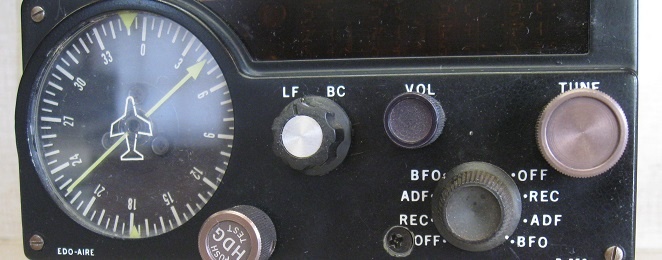
Vintage Audio: Fly with an Edo-Aire ADF Receiver | Telos Alliance
By The Telos Alliance Team on Sep 27, 2017 11:55:00 AM
Vintage Audio: Fly with an Edo-Aire ADF Receiver
Found in the Attic columns regularly seek out forgotten or unusual types of AM receivers, be they farm radios, high-fidelity AM, unlikely frequency coverage, or novelty types. If you're totally stumped by the picture of this device, don't feel too bad. Unless you've had a pilot's license and been flying private aircraft for the past thirty years, you'd have no reason to encounter one of these receivers. This installment follows on the Sony AIR-7, and is our second aviation-related entry. The Edo-Aire R-556 E ADF (Automatic Direction Receiver) is typical of radio navigation aids that were in virtually all private aircraft before the advent of GPS receivers.
Read MoreTopics: Vintage Electronics, Vintage Technology, Broadcast History
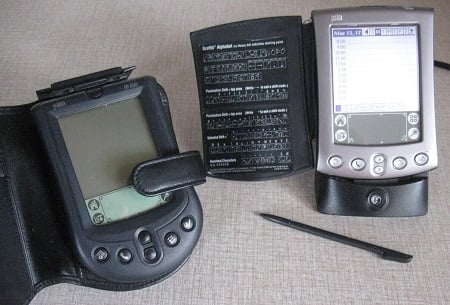
Vintage Audio: PalmPilots m100 and m515 | Telos Alliance
By The Telos Alliance Team on Apr 11, 2017 4:15:00 PM
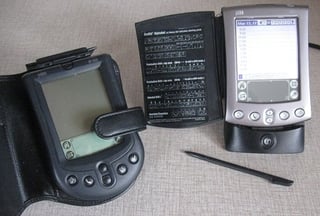 Vintage Audio: PalmPilots m100 and m515
Vintage Audio: PalmPilots m100 and m515
2016 marked the 20th anniversary of the release of the Palm Pilot, the first commercially successful PDA, or Personal Digital Assistant. The event passed without much fanfare or recognition. What little there was probably got drowned out by press on the latest iPhone, Google Android or BlackBerry. But the truth is, these devices owe a lot of their conceptual identity to that landmark device that hit the streets in the mid-1990s. This Found in the Attic explores the history of PDAs, the Palm company and the PalmPilots m100 and m515. PDAs are a subset of the larger personal electronics revolution, which began in the 1970s.
Read MoreTopics: Electronics, Vintage Technology, PDAs
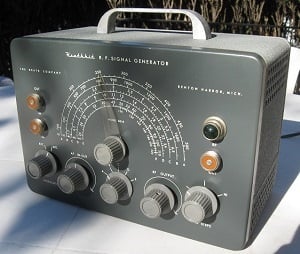
Vintage Audio: Heath SG-8 RF Signal Generator | Telos Alliance
By The Telos Alliance Team on Nov 29, 2016 10:13:00 AM
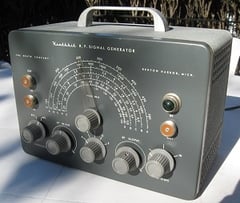 Vintage Audio: Heath SG-8 RF Signal Generator
Vintage Audio: Heath SG-8 RF Signal Generator
Heathkit equipment has consistently proven that you don't need to spend a lot of money to get reasonable test gear. This Found in the Attic feature, the SG-8 RF signal generator, is no exception. It was introduced by Heath in September of 1953, and sold for $19.50. Production continued through May of 1961. Despite the low cost, the stability and accuracy of this RF generator is pretty impressive.
The circuitry is simplicity in itself. The RF section consists of a single 12AU7. One triode section is a Colpitts oscillator, while the other is a buffer between the oscillator and output section. Four coils, for bands A-D, are switched via the band switch. The coil for band E, which covers 25-110 Mhz is really a section of bus bar wire. Additionally, useful calibrated harmonics are available up to 220 Mhz.
Read MoreTopics: Vintage Technology

Vintage Audio: Wilkinson Transmitter Extension Meter | Telos Alliance
By The Telos Alliance Team on Aug 4, 2016 3:13:00 PM
 Vintage Audio: Wilkinson Transmitter Extension Meter
Vintage Audio: Wilkinson Transmitter Extension Meter
This chapter of Found in the Attic explores a forgotten chapter in the history of broadcast remote control technology, transmitter extension meter panels.
In the earliest days of radio, the Commission required all operating transmitter sites to be manned by someone with a First Class FCC license. That person was required to take meter readings every 30 minutes, maintain the transmitter log, and make repairs, or switch to a backup in the event of failures.
As technology evolved, and transmitters became more reliable, the rules were relaxed so that sites could be controlled remotely. In FCC lingo, the studio where the operator on duty was stationed was known as the control point. They Commission allowed most stations to have operators with a Third Class license and broadcast endorsement on duty. There were exceptions for directional stations, and those with higher power, which still required the First Class ticket.
Read MoreTopics: Vintage Electronics, Vintage Technology
Recent Posts
Subscribe
If you love broadcast audio, you'll love Telos Alliance's newsletter. Get it delivered to your inbox by subscribing below!